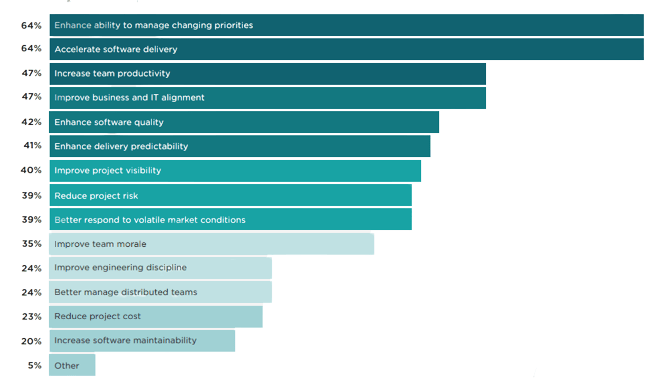IT managed services offer businesses an opportunity to focus on their core business functions without worrying about maintaining an IT department or even worrying about their IT needs at all. Outsourcing IT in your organization to a Managed Service Provider (MSP), can reduce your in-house workloads, increase IT efficiency and minimize IT downtimes, through effective IT management by the MSP. Managed IT services can be of various types, from complete IT outsourcing to a hybrid of in-house IT teams and a specialist outsourced IT team, to make up for gaps in existing IT roles and skills within your business’s internal IT team.
What are IT Managed Services?
IT managed services are information and technology services provided by a third-party organization through a contract or subscription basis, to enterprises and businesses, where the IT functions of a business are managed by a third-party IT managed services provider (MSP), also known as an IT outsourcing company. The whole idea behind hiring a managed service provider for your organization is to consign the IT function of your enterprise/business onto a team of IT specialists who could offer a better IT experience based on your organization’s needs.
Benefits of managed IT services:
1) 24/7/365 Support;
IT managed service providers offer round-the-clock service. Say you’re working on that project late into the night, which is due the next day and your server goes down, your internal IT team is long gone for the day and it would be a nightmare to get them back in the office to troubleshoot.
On the other hand, your MSP is just a phone call away from getting your server up and running again. IT managed service providers identify threats beforehand and eliminate threats before they can cause trouble.
2) Minimal Downtime;
IT outsourcing vendors have technological systems and software to effectively monitor and ensure the client has maximum service at all times. One such system is MSP’s analyzing and identifying potential threats to a customer’s IT system, and rectifying them early on, thereby eliminating the possibility of downtime for the customer.
3) Cost Saving;
MSPs have a steady monthly charge in exchange for their IT outsourcing service, although many managed services are tied to varying cloud expenses. All-in-all, this predictability offers better financial planning for your business.
Hiring a managed service provider for your IT function would be cheaper than your business having to find, hire, train and manage an in-house IT team, not to mention the infrastructure needed to achieve the level of services provided by an IT managed service provider.
4) Ability to fill in the skill gap cost-effectively;
Your organization’s internal IT department could be lacking certain skills and talent, which would be otherwise readily available through your IT MSP. Hiring such talent for your business’s IT team could be costly, especially if your organization requires such skills and talent for a short time / for a specific project.
IT managed service providers such as MBiz Software, offer flexible and scalable teams to fit the talent and skill needs of the customer.
5) Streamlined operations
Delegating the responsibility of data, storage, security, monitoring, management, etc… to an MSP, gives better reporting and centralized management of your organization’s IT functions. There wouldn’t be finger-pointing and blame-shifting should a problem arise; your MSP would be solely responsible for monitoring and fixing issues.
What types of managed IT services are available?
It is not uncommon for organizations to utilize MSP services of various types apart from complete outsourcing of their IT department, such as specialized SaaS (Software As A Service) server management & maintenance, NOCaaS (Network Operation Center As A Service), Cybersecurity services, Data Storage Services, VOIP Services, etc…
The old-school model for IT-managed service providers was a break-fix method, where monitoring was performed and the fixing was done when a problem arose. Modern IT MSPs have adopted an improved model of monitoring and management of systems, where systems are monitored, potential threats identified and rectified to eliminate that issues.
Every company’s MSP needs are different. Before you choose an IT managed service provider for your organization/company, you should analyze and identify your IT needs and choose an appropriate IT MSP who can provide you with that service. E.g.; If your organization, as a bank requires an extended team to support the in-house IT Team (without having to commit as an employer), to help with the software development or maintenance of your organization’s banking systems, an IT managed services provider such as MBiz Software would be a good MSP partner for you given MBiz Software’s expertise in the banking industry and the flexibility offered, for you to hire an extended team.
In Summary, IT-managed service providers can be very beneficial for your organization/business, depending on the needs of your business and the availability of quality resources in your organization. IT MSPs can help your business grow with limited resources, especially Fintech and Saas startups.
Want MBiz Software to help you manage your IT? Connect with us for a FREE consultation!











